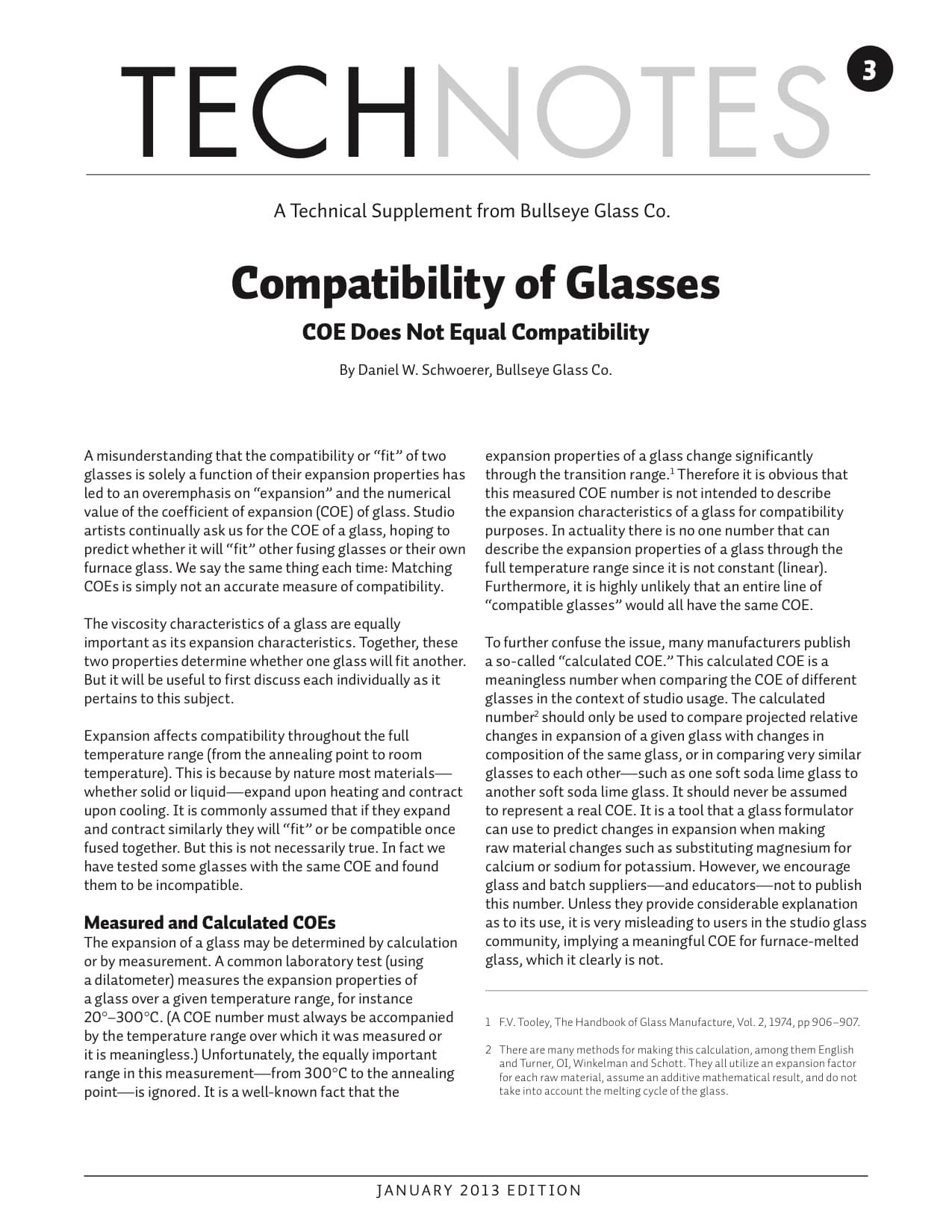Why COE Isn’t the Whole Story
A misunderstanding that the compatibility or “fit” of two glasses is solely a function of their expansion properties has led to an overemphasis on “expansion” and the numerical value of the coefficient of expansion (COE) of glass. Studio artists continually ask us for the COE of a glass, hoping to predict whether it will “fit” other fusing glasses or their own furnace glass. We say the same thing each time: Matching COEs is simply not an accurate measure of compatibility.
The viscosity characteristics of a glass are equally important as its expansion characteristics. Together, these two properties determine whether one glass will fit another. But it will be useful to first discuss each individually as it pertains to this subject. Expansion affects compatibility throughout the full temperature range (from the annealing point to room temperature). This is because by nature most materials— whether solid or liquid—expand upon heating and contract upon cooling. It is commonly assumed that if they expand and contract similarly they will “fit” or be compatible once fused together. But this is not necessarily true. In fact we have tested some glasses with the same COE and found them to be incompatible.
Measured and Calculated COEs The expansion of a glass may be determined by calculation or by measurement. A common laboratory test (using a dilatometer) measures the expansion properties of a glass over a given temperature range, for instance 20°–300°C. (A COE number must always be accompanied by the temperature range over which it was measured or it is meaningless.) Unfortunately, the equally important range in this measurement—from 300°C to the annealing point—is ignored. It is a well-known fact that the expansion properties of a glass change significantly through the transition range. Therefore it is obvious that this measured Compatibility of Glasses COE number is not intended to describe the expansion characteristics of a glass for compatibility purposes. In actuality there is no one number that can describe the expansion properties of a glass through the full temperature range since it is not constant (linear). Furthermore, it is highly unlikely that an entire line of “compatible glasses” would all have the same COE.


